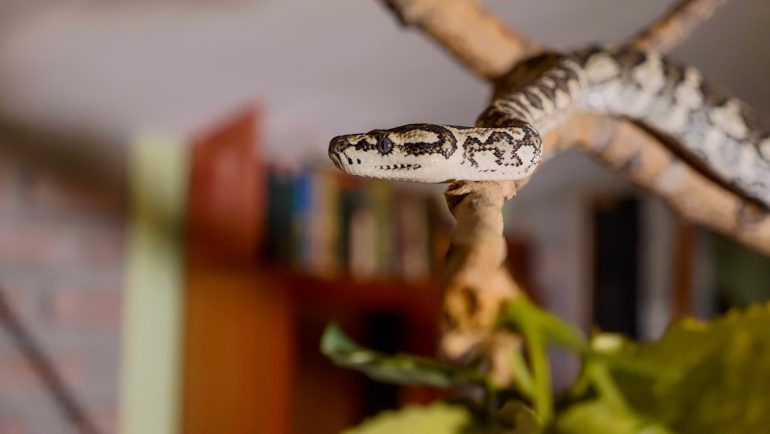Movies make it appear that every human encounter with a snake is life threatening. The truth is seldom that dire, but no one wants to get up close and personal with a snake. What should you do when one slithers into your home? Take a deep breath and use this guide.
Most snakes aren’t poisonous
Let’s put one fear mostly to rest. North America is home to scores of snake species, yet only four are venomous: rattlesnakes, water moccasins, copperheads and coral types. Your neighbor may think that critter he killed in his yard is a “rattlesnake,” but it’s more likely to be a common rat snake, a harmless type that actually keeps away, well, rats. To many people believe all snakes are perilous, but chances are that the reptile you see in your flowerbed is harmless.
Prevention is the best protection
Still, no one wants one in the house (except for those who keep them as pets!).
Prevention is key to avoiding this scary situation. Typical entry points are crawl spaces or basements, but a snake can get into your house through any hole big enough to accommodate its head. So inspect your home’s exterior from the ground to the roofline and fill any hole a quarter-inch or larger with caulk or a foam such as Great Stuff. Fill necessary openings like masonry weep holes with steel wool. Use mesh with holes smaller than a quarter-inch to cover outside ducts such as dryer exhaust vents. These steps will prevent most snakes from getting in.
Yikes! A snake on the floor!
What should you do, besides screaming, if you turn on the light and there’s a snake on the floor?
If you aren’t sure whether the snake is poisonous, throw a blanket or large towel over the reptile. It will probably stay underneath it, feeling safe. Otherwise, leave it alone and call your city’s animal control department or a snake removal professional to send someone out to evict it.
If you are certain the snake isn’t venomous and you feel up to evicting it yourself, grab a broom. Have someone open the closest exterior door and sweep the animal outside, where it will slither off. The little crawler truly is more afraid of you than the other way around.
If you know a snake is lurking in the house, attic, basement or crawl space but it has eluded you, it’s best to contact a professional, since governmental animal control representatives have limits on what they can do. A pro can pursue the animal into tight spaces.
Get your house checked for other pests
Why did the reptile come into your house in the first place? Sometimes a snake seeks warmth when outside temperatures become uncomfortably cold. In times of drought, the creature may be in search of water. But in the case of species such as rat snakes, their presence may be a red flag that you have mice or rats. Have a pest control company check for signs of rodents, which are more dangerous than most snakes since they can chew through electrical wiring and cause fires. Think of it this way: The snake might turn out to be a blessing in a scaly disguise.
Related – Removing Wild Animals from Your Home


